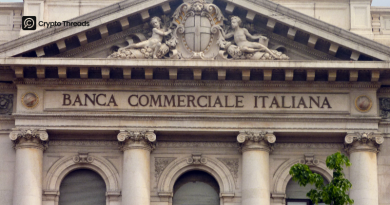CFTC Greenlights Tokenized Collateral Initiative for Derivatives Markets
The U.S. Commodity Futures Trading Commission (CFTC) is working to modernize derivatives trading by exploring the use of tokenized collateral, including stablecoins, to enhance market efficiency and transparency.
- The plan could let traders post stablecoins as margin for futures and swaps.
- Builds on a February non-cash collateral pilot with Circle, Coinbase, Crypto.com, Moonpay, and Ripple.
- Tokenized collateral aims to reduce settlement risk, expedite clearing, and enhance transparency.
- Industry stakeholders can submit feedback by Oct. 20.
- Follows Congress’s GENIUS Act, the first U.S. law specifically regulating stablecoins.
- Ripple SVP Jack McDonald says distributed ledger collateral could modernize capital markets.
- Pham has floated a digital-asset regulatory sandbox to test emerging market structures.
The Commodity Futures Trading Commission is stepping firmly into the tokenization era with a plan to incorporate blockchain-based collateral into the U.S. derivatives market. Acting Chair Caroline D. Pham announced the initiative on Tuesday, signaling that the CFTC wants to give traders the ability to post tokenized collateral — such as stablecoins — when entering into futures, swaps, and other derivatives contracts.
Collateral in derivatives trading acts as a safety net, ensuring that both parties meet their financial obligations and reducing the risk of default. Traditionally, this has been limited to cash or specific high-grade securities. By using tokenized assets, the CFTC believes market participants could gain faster settlement times, automated verification through distributed ledgers, and near-instant tracking of collateral movements across platforms. This change could slash operational costs, reduce counterparty risk, and provide unprecedented transparency for market regulators and participants alike.
The initiative follows a Global Markets Advisory Committee (GMAC) recommendation to expand the use of non-cash collateral through distributed ledger technology. In February, the agency tested the waters with a pilot program involving Circle, Coinbase, Crypto.com, Moonpay, and Ripple. Those companies participated in exploring how stablecoins could be used as margin in derivatives trades, offering early insight into how tokenized collateral might work at scale.
Industry leaders are voicing support. Jack McDonald, Ripple’s senior vice president for stablecoins, said tokenized collateral could “increase efficiency and transparency” in financial contracts like futures or swaps. Representatives from Circle and Coinbase echoed the sentiment, underscoring the potential for blockchain-based systems to streamline capital markets.
The CFTC’s approach builds on a broader effort to modernize U.S. financial infrastructure and dovetails with Washington’s growing regulatory framework for digital assets. Earlier this year, Congress passed the GENIUS Act, the first U.S. law to specifically regulate stablecoins. That act tasked agencies, including the Treasury Department, with drafting clear rules for stablecoin use—a process that could create a more secure environment for innovations like tokenized collateral.
The commission is also inviting market participants to submit comments and technical suggestions on the initiative by October 20. Acting Chair Pham emphasized that public input will help shape the final framework, describing the effort as part of the CFTC’s ongoing “crypto sprint,” an accelerated plan to implement the recommendations of the President’s Working Group on Digital Asset Markets report. She has previously floated the idea of a digital asset regulatory sandbox, which could serve as a testing ground for emerging financial technologies.
By advancing this initiative, the CFTC is not just catching up with trends but positioning the United States as a leader in the global movement toward tokenized markets. As Pham put it, “The public has spoken: tokenized markets are here, and they are the future.”
Final Thought
The CFTC’s move to enable tokenized collateral represents more than a technical upgrade—it’s a signal that U.S. regulators see blockchain technology as a practical solution for efficiency, transparency, and risk management in capital markets.



